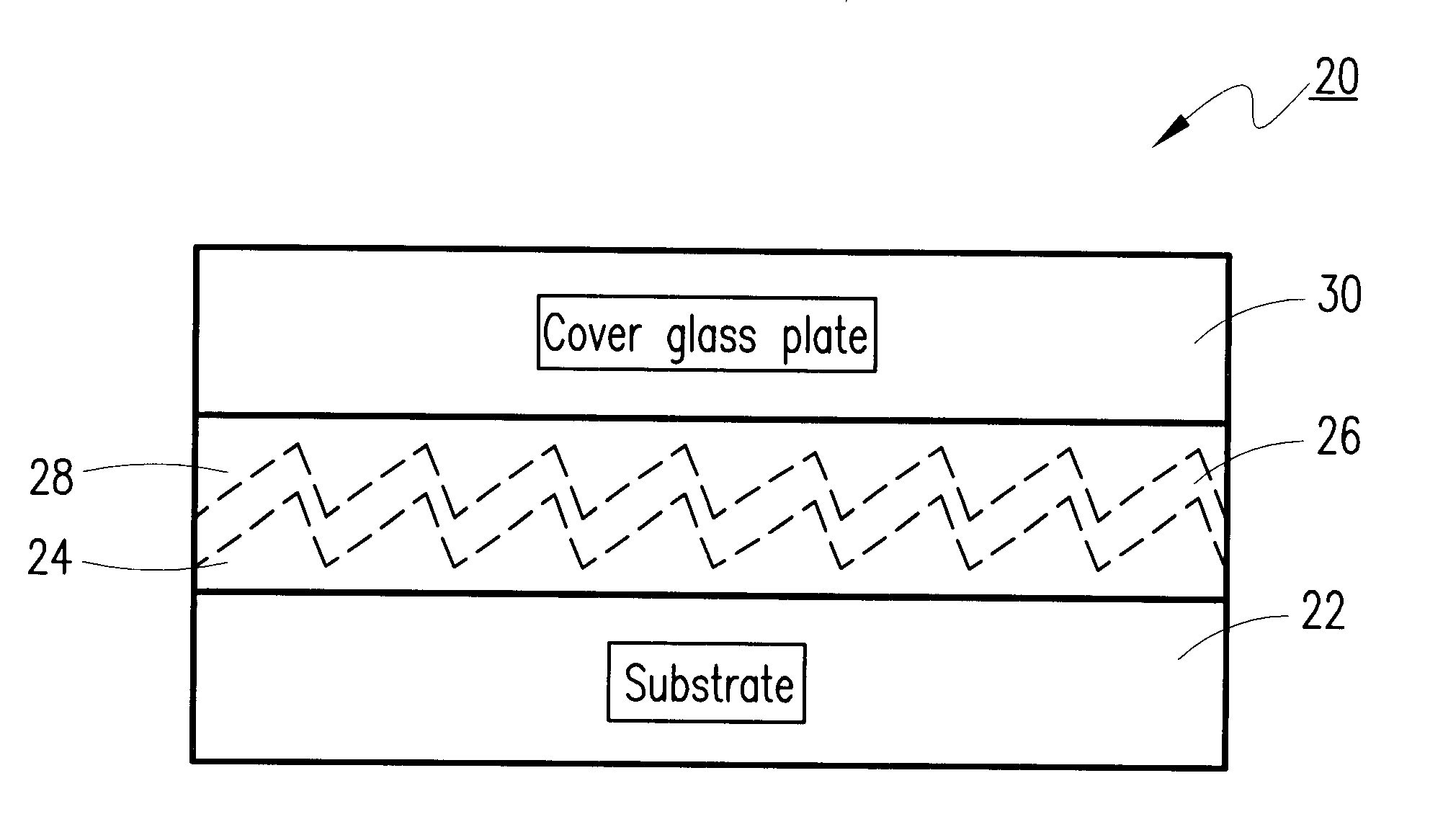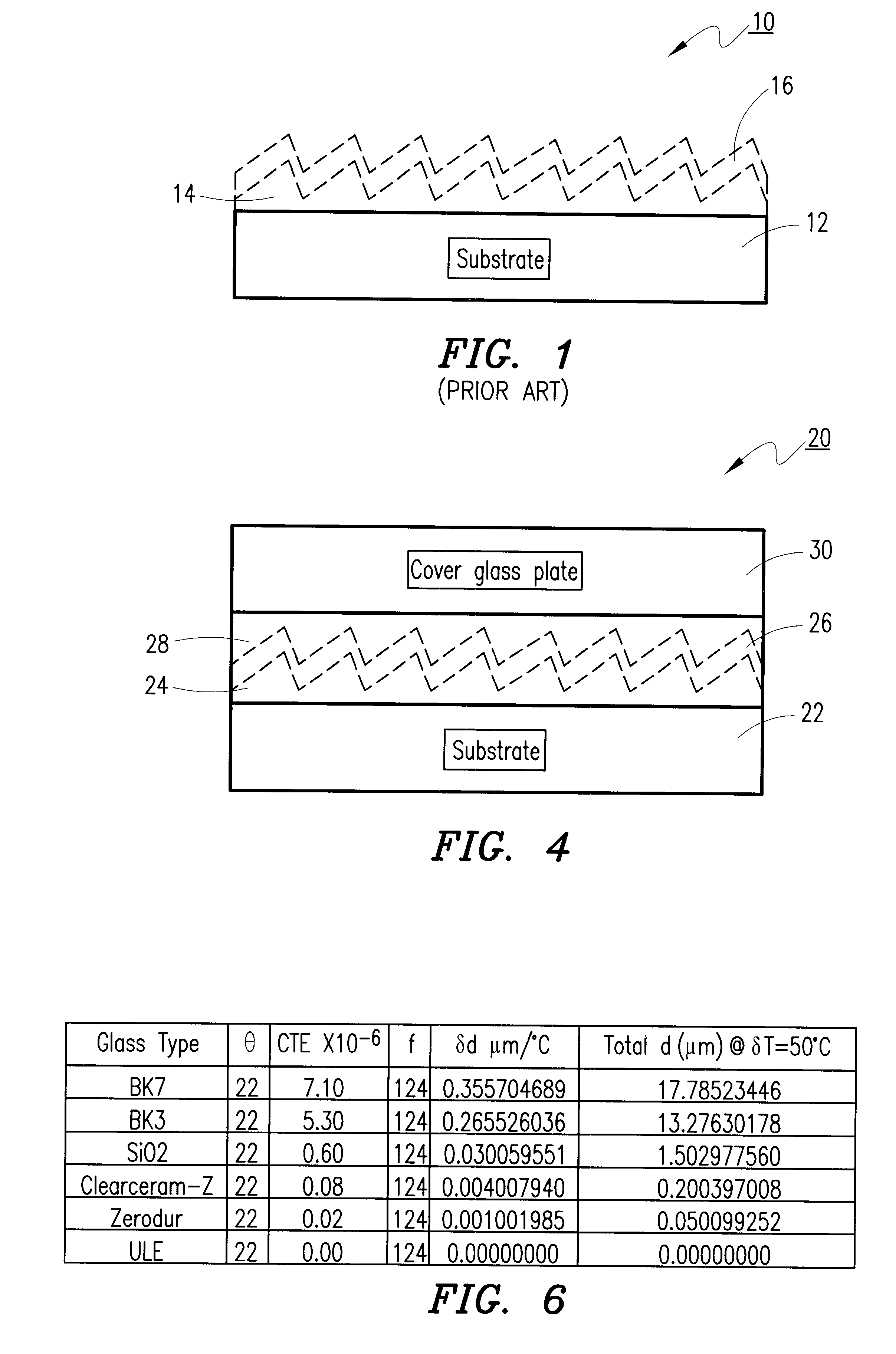Diffraction grating for wavelength division multiplexing/demultiplexing devices
a diffraction grating and wavelength division technology, applied in the direction of mountings, optics, instruments, etc., can solve the problems of channel uniformity simply not being maintained, insertion loss will continue to increase, and many difficulties of thin film filtering based multiplexing/demultiplexing devices
- Summary
- Abstract
- Description
- Claims
- Application Information
AI Technical Summary
Benefits of technology
Problems solved by technology
Method used
Image
Examples
Embodiment Construction
)
Referring to FIG. 4, there is shown an improved diffraction grating 20 for use in a bulk diffraction grating based multiplexing / demultiplexing device in accordance with the present invention. The improved diffraction grating 20 comprises a glass substrate 22, a polymer grating layer 24 located adjacent to the glass substrate 22, a metal coating layer 26 located adjacent to the polymer grating layer 24, a polymer coating layer 28 located adjacent to the metal coating layer 26, and a glass cover 30 located adjacent to the polymer coating layer 28. The metal coating layer 26, which is used to increase the reflectivity of the improved diffraction grating 20, is typically formed of gold (Au) or aluminum (Al) and typically has a thickness in the range of 0.05 to 0.5 .mu.m.
With the basic structure of the improved diffraction grating 20 now described, important characteristics of the improved diffraction grating 20 will now be discussed. That is, while the present invention centers around ...
PUM
| Property | Measurement | Unit |
|---|---|---|
| thickness | aaaaa | aaaaa |
| thickness | aaaaa | aaaaa |
| insertion losses | aaaaa | aaaaa |
Abstract
Description
Claims
Application Information
 Login to View More
Login to View More - R&D
- Intellectual Property
- Life Sciences
- Materials
- Tech Scout
- Unparalleled Data Quality
- Higher Quality Content
- 60% Fewer Hallucinations
Browse by: Latest US Patents, China's latest patents, Technical Efficacy Thesaurus, Application Domain, Technology Topic, Popular Technical Reports.
© 2025 PatSnap. All rights reserved.Legal|Privacy policy|Modern Slavery Act Transparency Statement|Sitemap|About US| Contact US: help@patsnap.com



